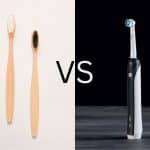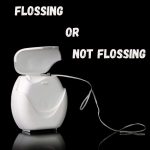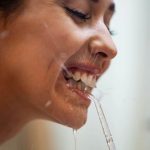It’s no secret that brushing your teeth regularly is an important part of your oral hygiene. But did you know that using both oral care actions for your teeth is a great way to reach every tooth? Most people assume that brushing only cleans the front and back of their teeth. This isn’t true. Brushing and flossing your teeth is the best way to get rid of plaque, cavities, and gingivitis in between teeth.
Types of Toothbrushes & What to Look for
What are good cheap brushes that are easily cleaned? How do you clean toothbrushes on a smartphone? In 2022, there are several different types of dental toothbrushes available for all ages. Many toothbrushes are now designed to prevent cavities and gum disease. The price range for an electric toothbrush is comparatively less expensive. However, electric toothbrushes can be used for cleaning the teeth as it uses the vibrations of a toothbrush.
Which is the more effective toothbrush?
The electric toothbrush is commonly recommended in place of the manual toothbrush, as it provides cleaner teeth if needed. This helps remove plaque by vibration and automatic circular motion. Most electric toothbrushes also come with a timer that can help you brush for two seconds, as well as cleaning modes, brush heads, electric toothbrush, battery life, and features. When cleaning teeth, you have a simple task: ensuring your teeth are touching each other. Usually, they are 30-second intervals that indicate that your brush will go into different quadrants of your mouth. The quadrants are: top left and right, top and bottom, bottom left and right, and finally, top left, top right, bottom left, and bottom right.
What should I look for when buying an electric toothbrush?
Electric toothbrushes have two kinds: oscillating and sound. A rotating toothbrush moves to remove plaque from the surface by vibrating. Sonic toothbrushes use bristles which rotate rapidly from side to side to achieve faster cleaning and reduce costs. Most modern electronic toothbrushes are able to detect pressure by flashing when brushing at too high a pressure. Occasionally, timers vibrate to make you move in a certain place. Keep in delicate and deep clean mode. Cleaning modes, brush heads, electric toothbrush, battery life, features and hard to reach.
What is the purpose of combining brushing with flossing teeth?
Brushing teeth is important for preventing gum disease. Refusing to brush your teeth can cause gum damage. The brushing process helps prevent tooth decay as well as gum damage by inhibiting the accumulation of plaque.
What is the Tartar?
Although we can’t prevent bacteria from entering our mouths, it’s essential to keep our teeth clean. These molecules combine with carbohydrates and food by-products and create the sticky coating known as plaque. A lint layer contains a variety of bacteria which enters into gums and stick to fillers/braces. These bacteria cause tooth decay and deterioration of the enamel. Nevertheless, removing plaque from tooth enamel can prevent tooth decay. More serious issues occur after plaques remain in place and harden, forming tartar. Tartar lays beneath the gums. A Tartar is a porous and rough layer that any dentist cannot remove.
How do I know if I have Tartar?
Unlike plaque, which is normally colorless, tartar is visible with an upper gum line. Tartar typically has a yellow to brown color that can greatly impact your appearance as well as your smile. It will help to prevent tartar accumulation. A regular dental hygiene program reduces the chance of developing tartar. Here, electrical toothbrushes remove as much plaque as normal hand-brushing machines and can provide a better clean surface than regular hand-tooth brushing machines. It is important to choose toothpaste that contains sodium fluoride and antibacterial and enamel strength.
How can I remove the Plaque from my house?
Removing plaque from your mouth daily reduces the possibility that you have tartar buildup. A healthy dental practice can reduce plaque buildup if it is accompanied by daily flossing.
Plaque is a sticky film that can build up on your teeth and gums. Plaque can cause cavities and gum disease. You can remove plaque by brushing your teeth twice a day and flossing. Electric toothbrushes can be especially effective at removing plaque. Some electric toothbrushes have pressure sensors that can help you avoid brushing too hard.
Water flossers can also help remove plaque from your teeth and gums. Be sure to brush for two minutes and use gentle pressure.
Can plaque be removed with a toothbrush?
Plaque can be removed with an electric toothbrush. Plaque is a sticky film of bacteria that forms on teeth. Electric toothbrushes are more effective than manual toothbrushes at removing plaque. To remove plaque, brush your teeth twice a day with an electric toothbrush. Be sure to gently brush your teeth and gums to avoid damaging your oral health.
Plaque removal increases during brushing. According to a study, brushing in 30 seconds removes 50% of plaque compared to brushing in 30 seconds.
What type of toothbrush is best for removing plaque?
Consumers usually prefer electric toothbrushes as they provide deeper cleaning. This technique is effective by using vibration and automated circular motion. A large majority of electronic toothbrushes are equipped with timers and are ready to brush in just seconds.
What dissolves hard tartar?
Many things can dissolve hard tartar, including vinegar, lemon juice, and baking soda.
Baking soda is a common ingredient in many kinds of toothpaste and effectively dissolves hard tartar. It is a natural abrasive that can help remove plaque and stains from teeth. Baking soda is also alkaline, which can help neutralize acids in the mouth and prevent tooth decay.
White vinegar removes Tartar. Use white vinegar and salt to mix into warm water. It’s then possible to gargle this solution twice daily to remove tartar deposited at the surface between the gum lines and teeth.
You can also purchase products specifically designed to dissolve tartar.
Is it OK to brush teeth without toothpaste?
Contrary to common belief, toothpaste is not mandatory for brushing the teeth. Using toothpaste makes your mouth feel fresh and cleaner, and toothpaste should be avoided if necessary. The biggest danger of tooth decay is plaque accumulated after eating or drinking liquids.
Can you brush your teeth with water if you don’t have toothpaste?
Hack – Brush with water. Even when the toothbrush is empty, brushing your teeth can provide many health-enhancing effects. Brushing your toothbrushes with a wet toothbrush removes food particles from the surface.
What bacteria is found in toothbrushes?
According to the study, 70 percent of toothbrushes have been contaminated. Can you list the germs in this sample? Scientists discovered the flu virus on a toothbrush.
How do I brush in between my teeth?
Use an interdental straightening brush to straighten the front teeth. Insert the brush slowly around the teeth. Avoid pushing the brush onto a space; move gently or pick a smaller size. Move interdental brushes a few times.
Is it best to floss or brush first?
Using fluoride toothpaste to remove plaque from the gums has been shown to be more effective at avoiding bacterial growth. Besides flossing, prior to brushing increases the fluoride retention in your teeth.
Is brush and floss enough?
Brushing. It helps you clean up any dental plaque that has accumulated in the teeth. Brushing also helps to prevent dental decay. However, brushing alone will no longer protect your oral health. It helps maintain good oral hygiene by removing plaque in the tooth.
Is flossing actually necessary?
The use of flossing is a simple treatment with little to no clinical benefit to many patients. In addition, flossing and brushing reduced gingivitis significantly better than brushing alone compared to flossing alone.
How long can you go without brushing your teeth?
One week of not brushing: After one week, your dental enamel breaks down. This plaque is not removed, so bad breath can grow easily. The teeth can’t be cleaned. During a period of one week it can cause fewer tooth problems and cavities.
What happens if you brush and floss every day?
Brushing daily keeps gum tissue clean, reduces bacteria and protects pearly whites. If you are not brushing your teeth and flossing thoroughly, it’s important to see your dentist if there’s anything that’s not working.





